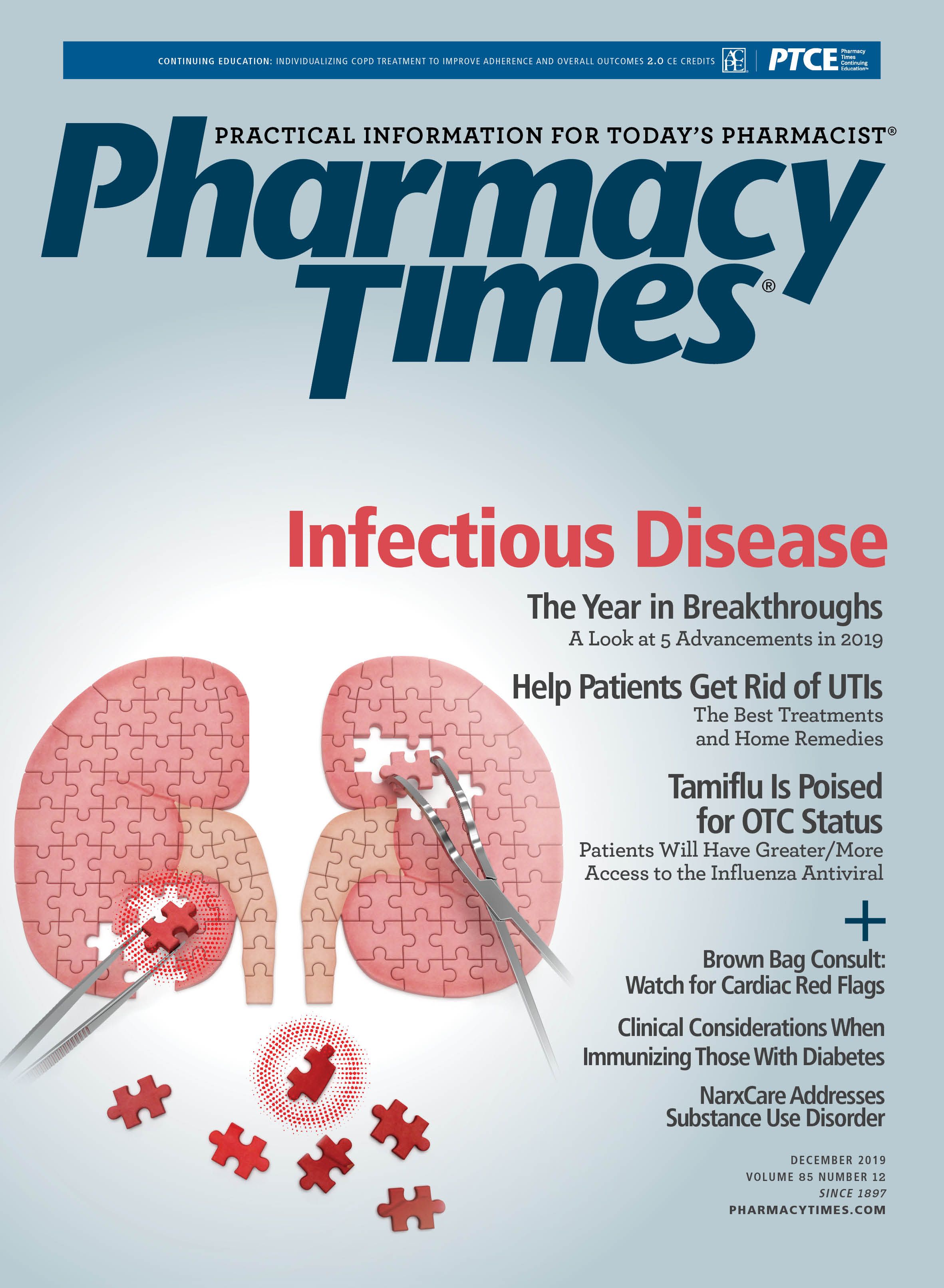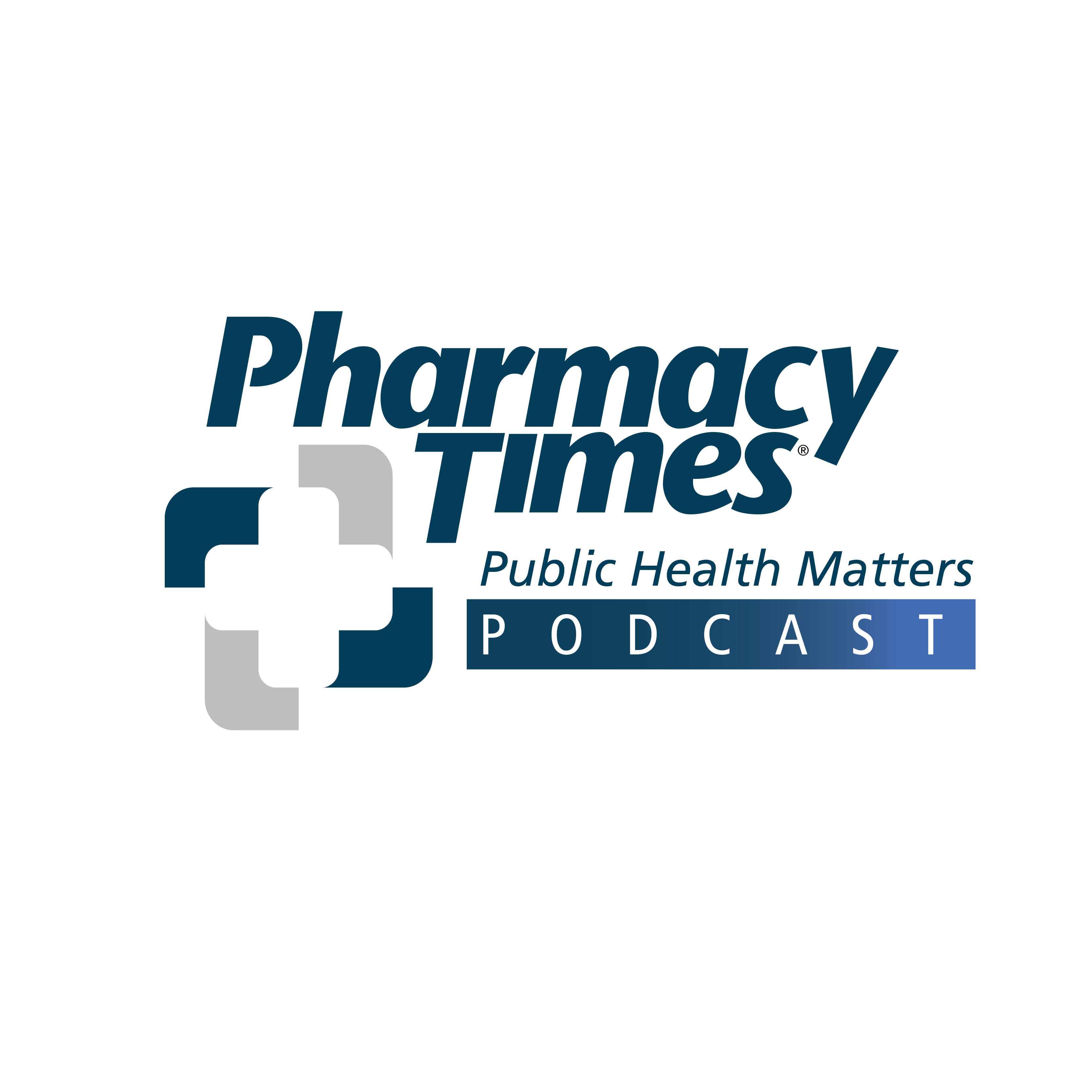Publication
Article
Pharmacy Times
2019 Was a Year for Advancements in Infectious Disease
Author(s):
These 5 developments, including epidemic forecasting and inhaled antibiotics to treat pneumonia, have global research behind them.
This past year has been an interesting one for infectious disease.
Often, when American pharmacists think about advancements, we think locally or nationally. In the case of infectious disease, however, we must think globally. When it comes to infectious agents, we need to be more concerned about outbreaks, epidemics, and drug resistance all over the world, as these could eventually affect people in the United States.1 Issues including HIV, immunization, malaria, traveler’s health, and tuberculosis are of tremendous concern,1 and some breakthrough treatments have been approved or are close to approval. Other advancements this year offer hope for people who develop pneumonia.
Let’s look at 5 developments.
1. Epidemic forecasting. Infectious disease outbreaks are major contributors to global morbidity and mortality. Real-time epidemic forecasting, which comprises systems that use predictive modeling to help health care providers prepare and respond, continues to advance. These systems rely on epidemic surveillance and consider several factors, such as agent and host mobility, environmental and host susceptibility, health care capacity, pathogen transmissibility, and population density. For predictive modeling to operate effectively, health care providers need standardized case definitions, and they need to share their data quickly.2 Investigators have used epidemic forecasting in food animal herds, which are easier to control and smaller, for years and are now implementing these models in human populations. Investigators have also had good results in modeling viral outbreaks such as dengue, Ebola, and influenza.3 And Japanese investigators used a predictive model to anticipate the likely size of a measles epidemic in real time. This model was used to evaluate public health control measures.4
2. Inhaled antibiotics to treat pneumonia. The leading cause of death from infectious disease is pneumonia.5 The lungs’ anatomical and physiological features limit antimicrobial access to the infection site, limiting intrapulmonary penetration of most systemically administered antimicrobials (eg, aminoglycosides and β-lactams).6 The marrying of drugs and devices has changed outpatient care in a number of conditions, and infectious disease is no exception. Antimicrobials that can be inhaled allow noninvasive, sustained drug concentrations in the pulmonary area, with minimal systemic exposure. Inhaled therapy also raises the possibility of using drugs that have dose-limiting toxicities when given systemically, so patients can receive therapeutic or supratherapeutic doses with few systemic adverse effects.7,8 A number of inhaled medications are available, including:9-12
- Amikacin liposome inhalation suspension for patients with mycobacterium avium complex unresponsive to treatment
- Ribavirin for respiratory syncytial virus infection in children
- Tobramycin for people with cystic fibrosis
On the horizon for pneumonia, which is notorious for hard-to-treat or resistant organisms, are inhaled polymyxins, drugs rarely used in humans because of toxicity concerns. Investigators are working to identify optimal formulations, administration techniques, doses, and dosing frequency. They are also looking for new polymyxin-derived agents, such as liposomal colistin and polymyxin analogues, to minimize toxicity.13
3. A possible cure for Ebola. Ebola is a viral hemorrhagic fever in humans and other primates. The FDA has granted breakthrough therapy designation for the investigational Ebola treatment mAb114.14 Tested in patients who contracted Ebola during the ongoing outbreak in the Democratic Republic of the Congo (DRC), mAb114 reduced the mortality rate. Investigators isolated this monoclonal antibody from a survivor of the 1995 DRC Ebola outbreak. This survivor had antibodies 11 years after infection, indicative of a strong immune response. In a randomized controlled trial that is continuing in DRC, mAb114-treated patients had an overall mortality rate of 34% compared with 53%, 49%, and 29% for 3 other drugs in the trial. Patients with low viral loads responded best, with a mortality rate of 11%.14
4. Pretomanid for highly drug-resistant tuberculosis (TB). Globally, about 40,000 individuals have highly drug-resistant TB.15 Although only a few cases have been reported in the United States, that is how outbreaks start: with a few cases. Pretomanid is an oral nitroimidazooxazine antimycobacterial. It has been given in the bedaquiline, pretomanid, and linezolid (BPaL) regimen. The Global Alliance for TB Drug Development tested BPaL in a trial of 109 patients. Remarkably, 89% were cured. Previously, best cure rates with other antimicrobials hovered at 34% overall. The BPaL combination’s most common adverse effects are peripheral and optic nerve damage, acne, anemia, nausea, vomiting, headache, and abnormal liver tests.15,16 The combination has also been associated with QT prolongation.15
5. Lefamulin for adults with community-acquired bacterial pneumonia (CABP). The FDA approved lefamulin for CABP caused by Chlamydophila pneumoniae, Haemophilus influenzae, Legionella pneumophila, Mycoplasma pneumoniae, Staphylococcus aureus (methicillin-susceptible isolates), and Streptococcus pneumoniae.17 It is available as an injection for intravenous administration or a 600-mg tablet administered orally every 12 hours for 5 days. The drug, a novel pleuromutilin antibiotic, offers an alternative, though a costly one, to moxifloxacin.18,19
CONCLUSION
Breakthrough developments have been few and far between in infectious disease for numerous reasons. This year, investigators have made inroads in important areas, giving reason to hope for more breakthrough therapies in 2020.
Jeannette Y. Wick, RPh, MBA, FASCP, is the assistant director of the Office of Pharmacy Professional Development at the University of Connecticut School of Pharmacy in Storrs.
REFERENCES
- CDC around the world. CDC website. cdc.gov/globalhealth/index.html. Updated November 12, 2019. Accessed November 13, 2019.
- Desai AN, Kraemer MUG, Bhatia S, et al. Real-time epidemic forecasting: challenges and opportunities. Health Secur. 2019;17(4):268-275. doi: 10.1089/hs.2019.0022.
- Viboud C, Vespignani A. The future of influenza forecasts. Proc Natl Acad Sci U S A. 2019;116(8):2802-2804. doi: 10.1073/pnas.1822167116.
- Akhmetzhanov AR, Lee H, Jung SM, et al. Real time forecasting of measles using generation-dependent mathematical model in Japan, 2018. PLoS Curr. 2018;10. pii: ecurrents.outbreaks.3cc277d133e2d6078912800748dbb492. doi: 10.1371/currents.outbreaks.3cc277d133e2d6078912800748dbb492.
- Heron M. Deaths: leading causes for 2016. Natl Vital Stat Rep. 2018;67(6):1-77.
- Rodvold KA, Yoo L, George JM. Penetration of anti-infective agents into pulmonary epithelial lining fluid: focus on antifungal, antitubercular and miscellaneous anti-infective agents. Clin Pharmacokinet. 2011;50(11):689-704. doi: 10.2165/11592900-000000000-00000.
- Hagerman JK, Hancock KE, Klepser ME. Aerosolised antibiotics: a critical appraisal of their use. Expert Opin Drug Deliv. 2006;3(1):71-86. doi: 10.1517/17425247.3.1.71.
- Le J, Ashley ED, Neuhauser MM, et al; Society of Infectious Diseases Pharmacists Aerosolized Antimicrobials Task Force. Consensus summary of aerosolized antimicrobial agents: application of guideline criteria. Insights from the Society of Infectious Diseases Pharmacists. Pharmacotherapy. 2010;30(6):562-584. doi:10.1592/phco.30.6.562.
- FDA approves a new antibacterial drug to treat a serious lung disease using a novel pathway to spur innovation [news release]. Silver Spring, MD: FDA; September 28, 2018. www.fda.gov/news-events/press-announcements/fda-approves-new-antibacterial-drug-treat-serious-lung-disease-using-novel-pathway-spur-innovation. Accessed October 1, 2019.
- Hoover J, Eades S, Lam WM. Pediatric antiviral stewardship: defining the potential role of ribavirin in respiratory syncytial virus-associated lower respiratory illness. J Pediatr Pharmacol Ther. 2018;23(5):372-378. doi: 10.5863/1551-6776-23.5.372.
- Shah DP, Ghantoji SS, Shah JN, et al. Impact of aerosolized ribavirin on mortality in 280 allogeneic haematopoietic stem cell transplant recipients with respiratory syncytial virus infections. J Antimicrob Chemother. 2013;68(8):1872-1880. doi: 10.1093/jac/dkt111.
- Shteinberg M, Elborn JS. Use of inhaled tobramycin in cystic fibrosis. Adv Ther. 2015;32(1):1-9. doi: 10.1007/s12325-015-0179-3.
- Biagi M, Butler D, Tan X, Qasmieh S, Wenzler E. A breath of fresh air in the fog of antimicrobial resistance: inhaled polymyxins for gram-negative pneumonia. Antibiotics (Basel). 2019;8(1). pii: E27. doi: 10.3390/antibiotics8010027.
- FDA grants breakthrough therapy designation to experimental Ebola treatment. Infectious Disease News website. healio.com/infectious-disease/emerging-diseases/news/online/%7Bf7d2c8a6-8e63-4541-9280-5e7234ffd9d1%7D/fda-grants-breakthrough-therapy-designation-to-experimental-ebola-treatment. Published September 9, 2019. Accessed October 1, 2019.
- FDA approves pretomanid. Drugs.com website. drugs.com/newdrugs/fda-approves-pretomanid-highly-resistant-forms-tuberculosis-5029.html. Published August 14, 2019. Accessed October 1, 2019.
- Drug trials snapshots: pretomanid. FDA website. www.fda.gov/drugs/development-approval-process-drugs/drug-trials-snapshots-pretomanid. Updated August 27, 2019. Accessed October 1, 2019.
- FDA approves new antibiotic to treat community-acquired bacterial pneumonia [news release]. Silver Spring, MD: FDA; August 19, 2019. www.fda.gov/news-events/press-announcements/fda-approves-new-antibiotic-treat-community-acquired-bacterial-pneumonia/. Accessed October 1, 2019.
- Perry W, Golan Y. Therapeutic potential of lefamulin in the treatment of community-acquired pneumonia. Future Microbiol. 2019;14:927-939. doi: 10.2217/fmb-2019-0027.
- Malani PN. Lefamulin-a new antibiotic for community-acquired pneumonia [published online September 27, 2019]. JAMA. doi: 10.1001/jama.2019.16215.







